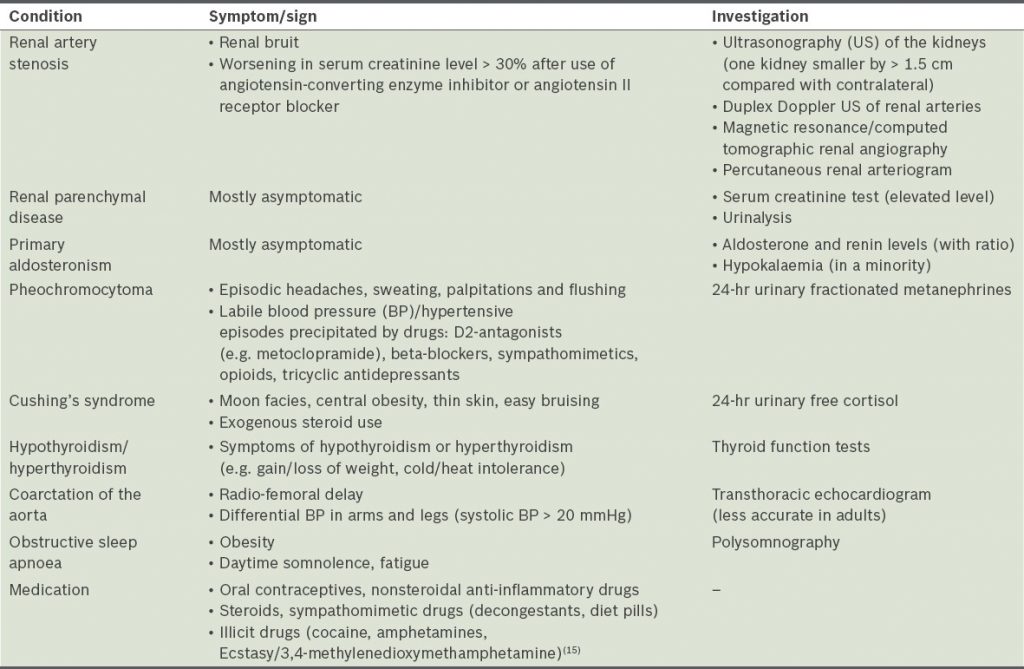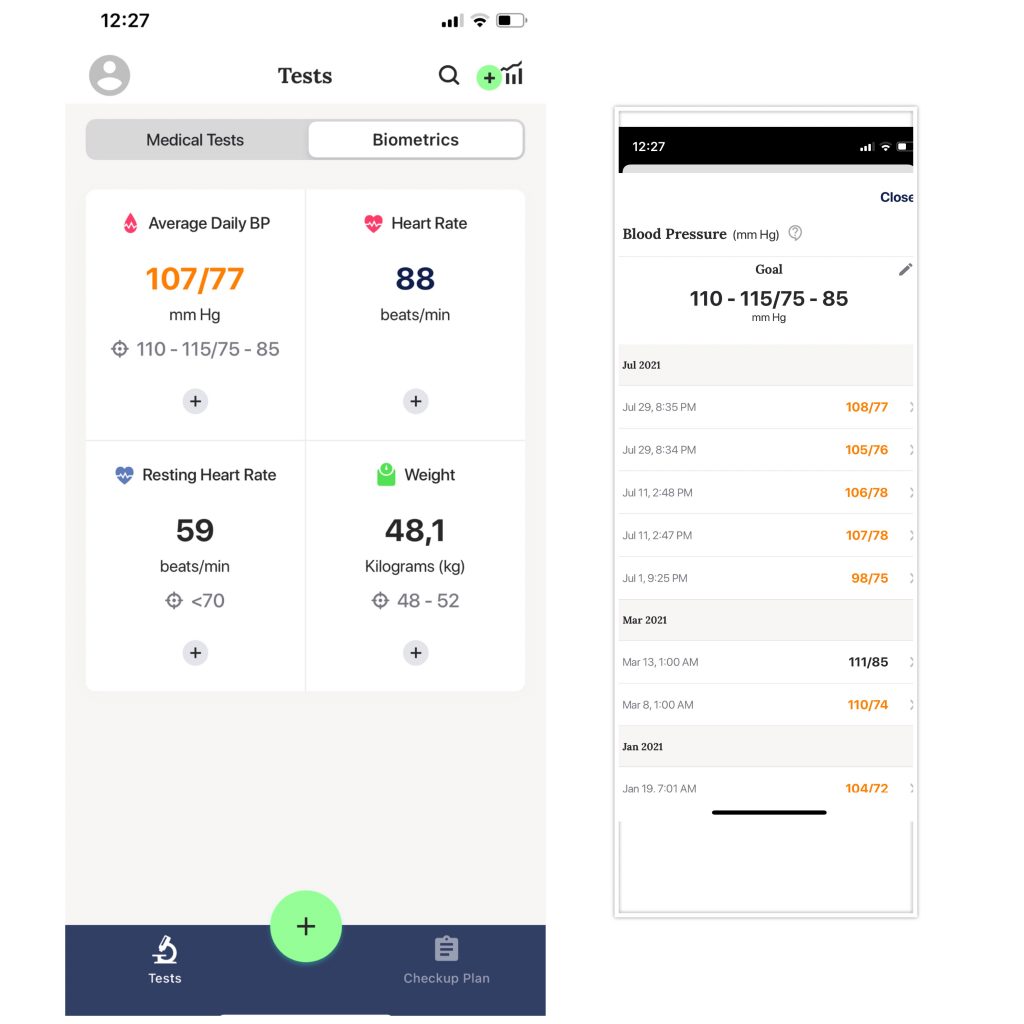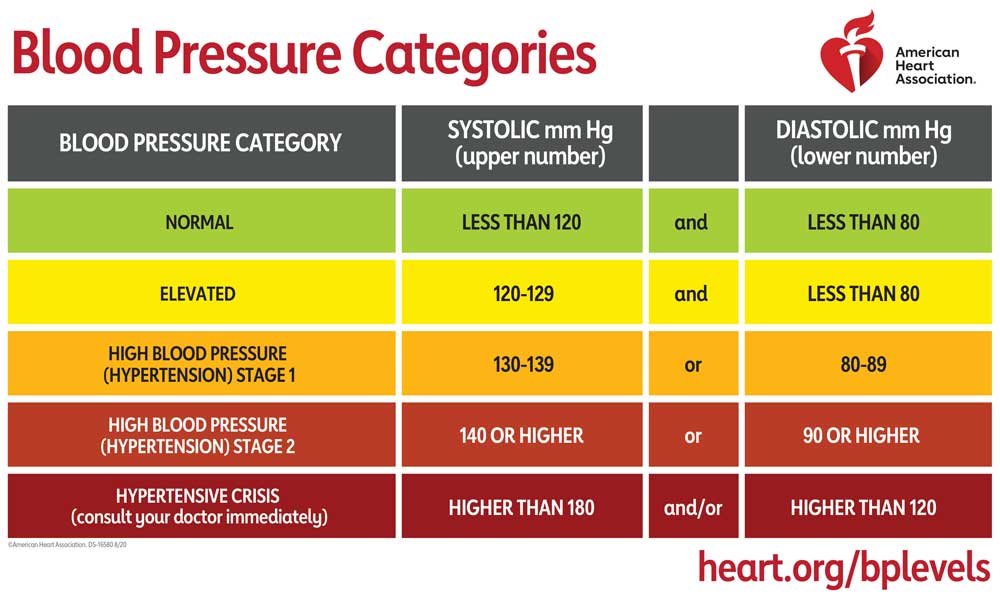Do you know that nearly half of adults in the United States (108 million, or 45%) have hypertension and 22.4% of adults with hypertension are unaware of their condition?1 How about other countries? Globally, 3.5 billion adults now have non-optimal systolic BP levels (that is, >110–115 mmHg) and 874 million adults have systolic BP ≥140 mmHg2. Thus, approximately one in four adults has hypertension. However, studies show that high blood pressure is not an inevitable consequence of aging34. Later on, we will tell you about these studies in detail. In the meantime, let’s talk about what hypertension is and how it can be prevented.
This article was last reviewed by Svetlana Baloban, Healsens,, 2020. This article was last modified on December 14, 2020.
What is Hypertension?
Hypertension is another name for high blood pressure. In 2017, the American College of Cardiology and the American Heart Association published new guidelines for treating hypertension, defining high hypertension as blood pressure at the level of 130/80 mmHg. Stage 2 hypertension is defined as blood pressure of 140/90 mmHg or higher.
This condition can lead to serious health complications and increase the risk of heart disease, stroke, and sometimes death. About two-thirds of adults with hypertension or taking medication to lower blood pressure at the age of 30 have a roughly 40% higher risk of developing cardiovascular disease than their peers.
In addition, cardiovascular disease in people with hypertension appears about 5 years earlier. This is why successful prevention and treatment of hypertension are crucial to reducing the burden of disease and increasing life expectancy.
RELATED ARTICLES
Hypertension Causes
Defining hypertension we need to distinguish between primary and secondary hypertension. The majority of patients suffer from primary hypertension, which is approximately 85% to 95% of all cases. It should be said that the causes of hypertension include several types of genetic issues combined with many factors, which will be discussed below. In almost all of these cases, the disease is associated with a family history. As for secondary hypertension, it accounts for 5% to 15% of all cases. Secondary hypertension means that high blood pressure is caused by another medical condition. For example, high blood pressure can be the result of diseases such as kidney, glandular, and heart disease.
Primary Hypertension
So, speaking of primary hypertension, we primarily talk about genetic predisposition along with many lifestyle factors. What are the most significant factors? First, it is a high sodium (Na+) intake56. Thus, high serum Na+ concentration promotes fluid (water) retention, thereby increasing blood volume and BP. When dietary Na+ increases in normotensive individuals, compensatory haemodynamic changes occur to maintain constant BP. These changes include a decrease in renal and peripheral vascular resistance and an increase in nitric oxide production by the endothelium. However, if the action of nitric oxide is impaired or absent, an increase in blood pressure occurs.
The second factor is poor sleep quality or sleep apnea. Also, excessive alcohol consumption and high mental stress contribute to the development of hypertension.
Finally, the likelihood of developing hypertension increases with age due to progressive hardening of the arterial vasculature. This induration is caused, among other things, by slowly developing changes in vascular collagen and an increase in atherosclerosis7. Finally, immunological factors can also play an important role. So, against the background of infectious or rheumatological diseases, such as rheumatoid arthritis, hypertension may develop.8
Follow us on Facebook|| Instagram || Telegram || Youtube
Secondary Hypertension
As we mentioned above, secondary hypertension means that it is caused by some other medical condition. Let’s talk about important clues pointing to some other causes of hypertension. First of all, such clues include young age. So, in young people under 30 years of age, renal causes or coarctation of the aorta (narrowing of the aortic lumen) are often determined. And it is because of these problems that the pressure rises. It is also helpful to understand what symptoms or signs may indicate secondary causes of high blood pressure (see table 1).
Another indicator that high blood pressure is caused by another disease is severe hypertension (BP ≥ 180/110 mm Hg). And also a situation when, despite the simultaneous administration of three antihypertensive drugs of different classes, including a diuretic, the pressure still remains above 140/90 mm Hg (resistant hypertension)9. Much attention should be paid to a sharp exacerbation of hypertension in a patient with previously stable control.

Diagnosis of Hypertension
High blood pressure is a silent danger, because only a few patients have clear hypertension symptoms. Thus, it’s important to know what hypertension is. And that is why in clinical practice, all adults should have BP measured at regular doctor visits. In addition, since 2010, it has been recommended to measure blood pressure on your own, for example at home or at pressure measurement points10. This ability to independently measure blood pressure allows you to identify various phenotypes of the disease. We are talking about such conditions as white coat hypertension (isolated clinical hypertension) and masked (isolated outpatient) hypertension.
How to measure your blood pressure?
It is recommended to measure your blood pressure correctly at regular intervals. Sit quietly for 5 minutes before starting the measurement. The cuff should be adjusted to fit the arm and positioned at heart level. In addition, BP should be checked both while sitting and standing. In this way, you can exclude orthostatic hypotension. This is a condition where an excessive decrease in blood pressure (BP) occurs when taking an upright position. Finally, it should be said that at least once BP should be measured on both arms. This should be done in order to compare varying results. If the difference in SBP is 20 mm Hg. and / or DBP more than 10 mm Hg., it is already a sign of vascular anomalies.

If you follow these guidelines, you will receive several records and will be able to calculate the average value from these 2-3 measurements. You can get average values in Healsens App automatically. This approach will provide an accurate estimate of your pressure. The very same diagnosis of hypertension must be confirmed by at least two readings of blood pressure ≥ 140/90 mm Hg.
If you notice any deviations, then it makes sense to measure your blood pressure twice in the morning and twice in the evening for at least 3 days, and preferably 7 days. After that, calculate the average for all measurements for the last 2 days to 6 days, depending on the measurements made for 3 or 7 days, respectively. As a rule, the readings of the first day are skipped. When taking morning and evening measurements, pay attention to the following recommendations.
- Blood pressure is measured in the morning 30 minutes after waking up, but before taking medication or having breakfast.
- Blood pressure is measured in the evening before taking medication.
Follow us on Facebook|| Instagram || Telegram || Youtube
What is normal blood pressure?
The American College of Cardiology and the American Heart Association have released their updated guidelines for blood pressure (Table 2)11.

As you can see, high blood pressure (without a diagnosis of hypertension) is systolic blood pressure between 120 and 129. Previously, this was an undefined category called “prehypertension.” As we wrote above, measurements must be obtained from at least two exact measurements in two different cases.
Laboratory investigations in the diagnosis of hypertension
The very fact of an increase in pressure is only a small part of the necessary examinations. It was mentioned before, a small proportion of patients have a potentially reversible cause of hypertension. This means that for such people, a correct diagnosis can lead to a cure or a significant improvement in blood pressure control. Therefore, it is advisable to perform simple screening for secondary hypertension in all patients (Box 1).
It is also worth paying attention to whether there were any manifestations of hypertension in the anamnesis. For example, hypertension may have been observed during pregnancy, which is an important factor in evaluating women with hypertension. Thus, medical history is very important in assessing the risk of cardiovascular disease. Using the well-known calculator, which we have already written about more than once, is also recommended for assessing the very same risk of cardiovascular diseases.
Such calculations can be carried out independently or done automatically via the Healsens app (you can find a free subscription to it under the link)..
Box 1 – Laboratory investigations in the diagnosis of hypertension
Routine tests:
1. Haemoglobin and haematocrit
2. Fasting plasma glucose
3. Serum total cholesterol, low-density lipoprotein cholesterol, high-density lipoprotein cholesterol
4. Fasting serum triglycerides
5. Serum potassium and sodium
6. Serum uric acid
7. Serum creatinine
8. Estimated glomerular filtration rate (eGFR)
9. Urine analysis including a test for microalbuminuria
10. 12-lead EKG
Additional tests based on history, clinical examination and routine tests
1. Haemoglobin A1c
2. Quantitative proteinuria
3. Out-of-office BP measurements*
4. Echocardiogram
5. Holter monitoring
6. Carotid ultrasound
7. Abdominal ultrasound
8. Pulse wave velocity
9. Ankle-brachial index
10. Further specialist tests for secondary hypertension (renin, aldosterone, catecholamines and their metabolites etc)
FURTHER READING
Follow us on Facebook|| Instagram || Telegram || Twitter || Youtube
Source: ©️2019 Healsens B.V. All right reserve
- Facts About Hypertension
- Global Burden of Hypertension and Systolic Blood Pressure of at Least 110 to 115 mm Hg, 1990-2015
- Migration, blood pressure pattern, and hypertension: the Yi Migrant Study
- The Kenyan Luo migration study: observations on the initiation of a rise in blood pressure
- Sodium in Your Diet
- Hypertension
- Vascular Aging and Arterial Stiffness
- Hypertension
- Secondary hypertension in adults
- Methodology and technology for peripheral and central blood pressure and blood pressure variability measurement: current status and future directions – Position statement of the European Society of Hypertension Working Group on blood pressure monitoring and cardiovascular variability
- Monitoring Your Blood Pressure at Home

